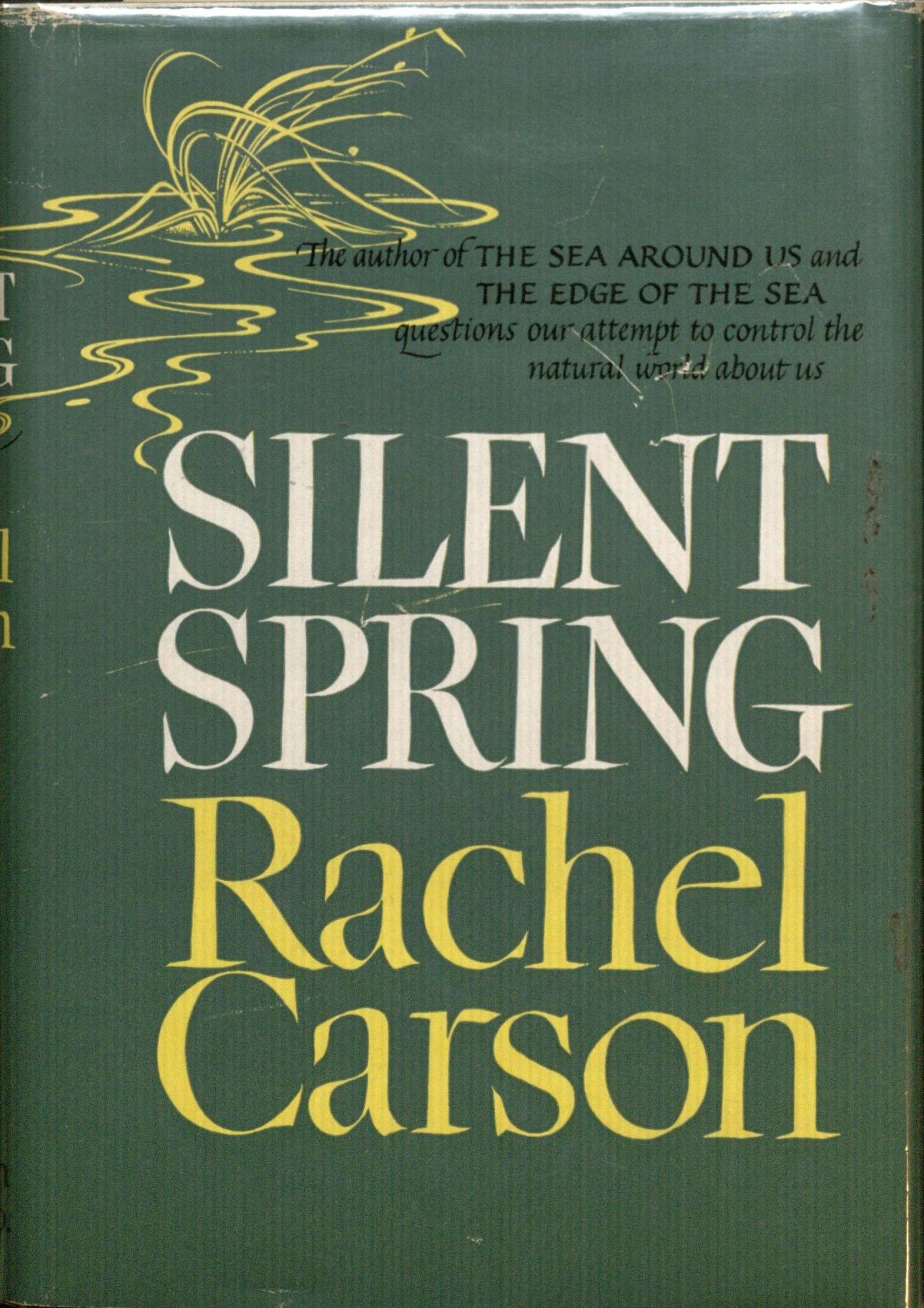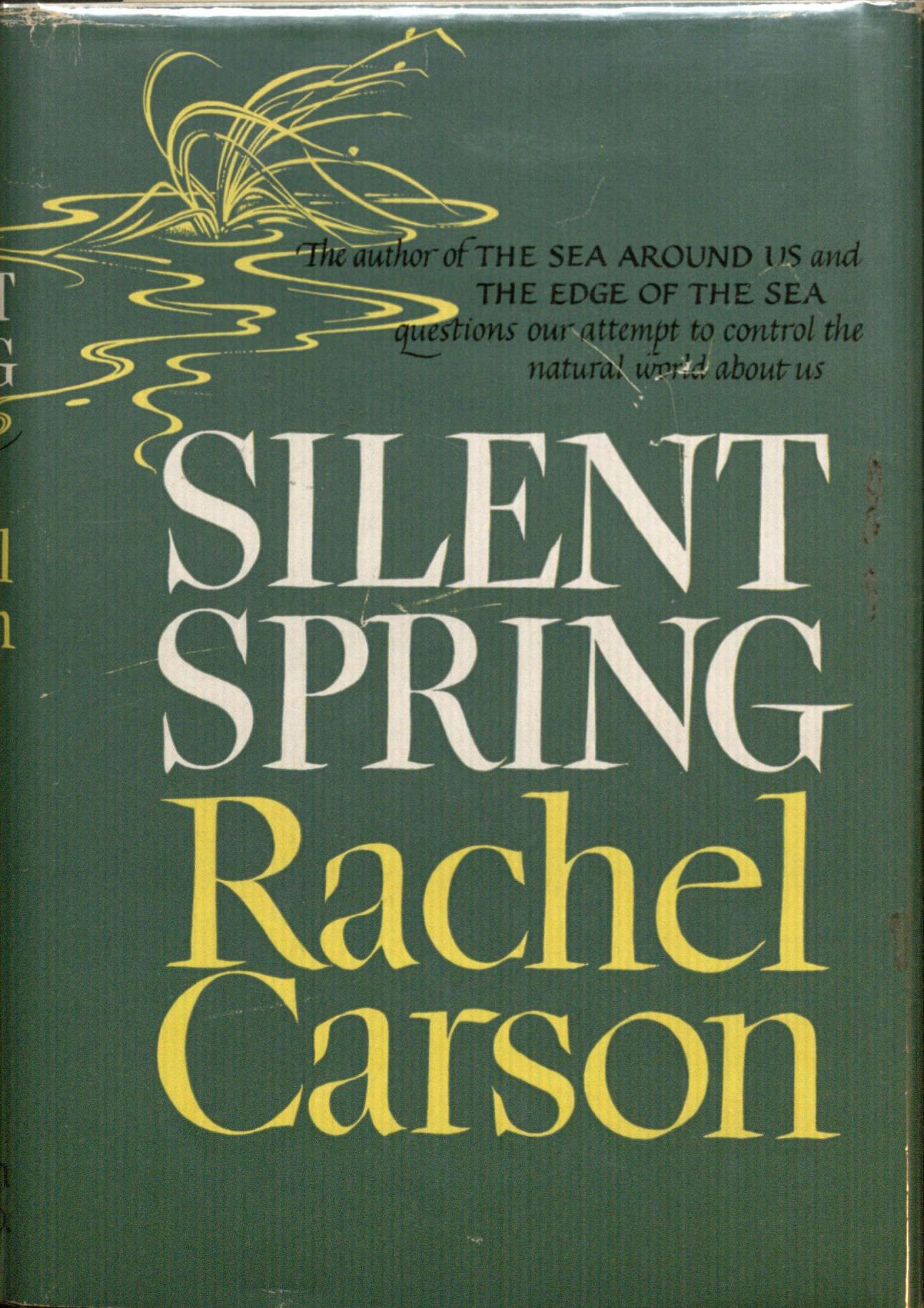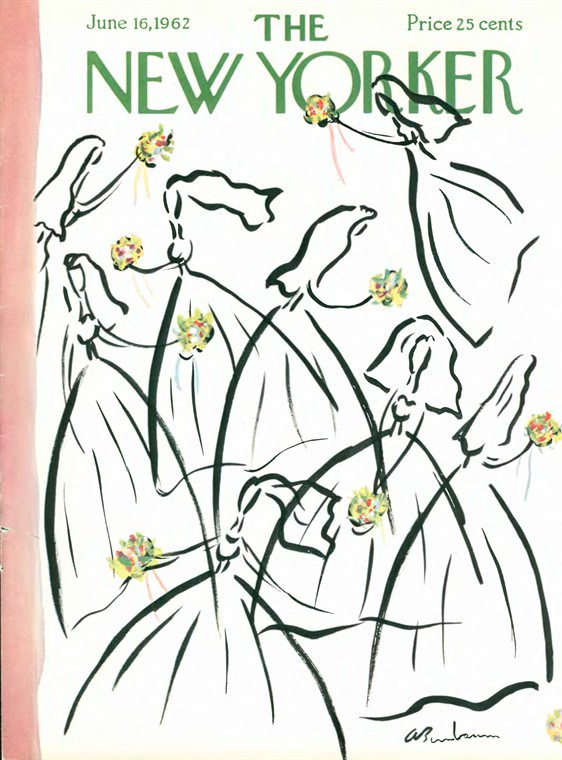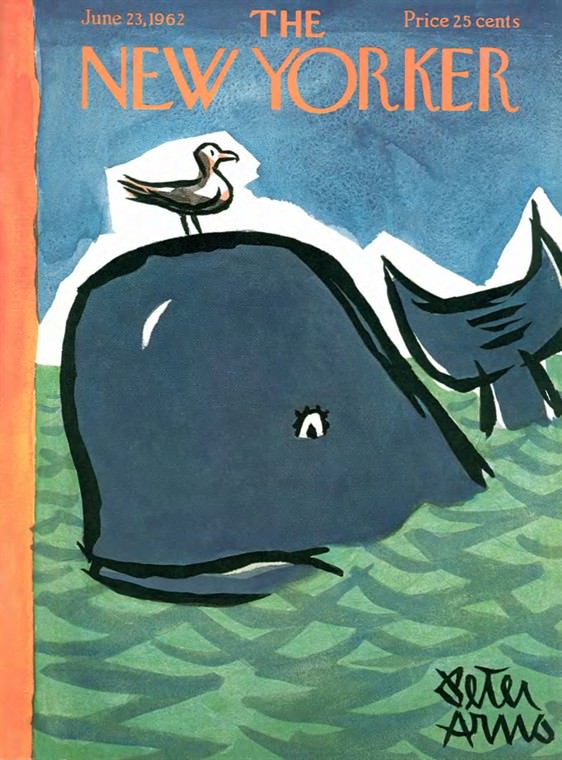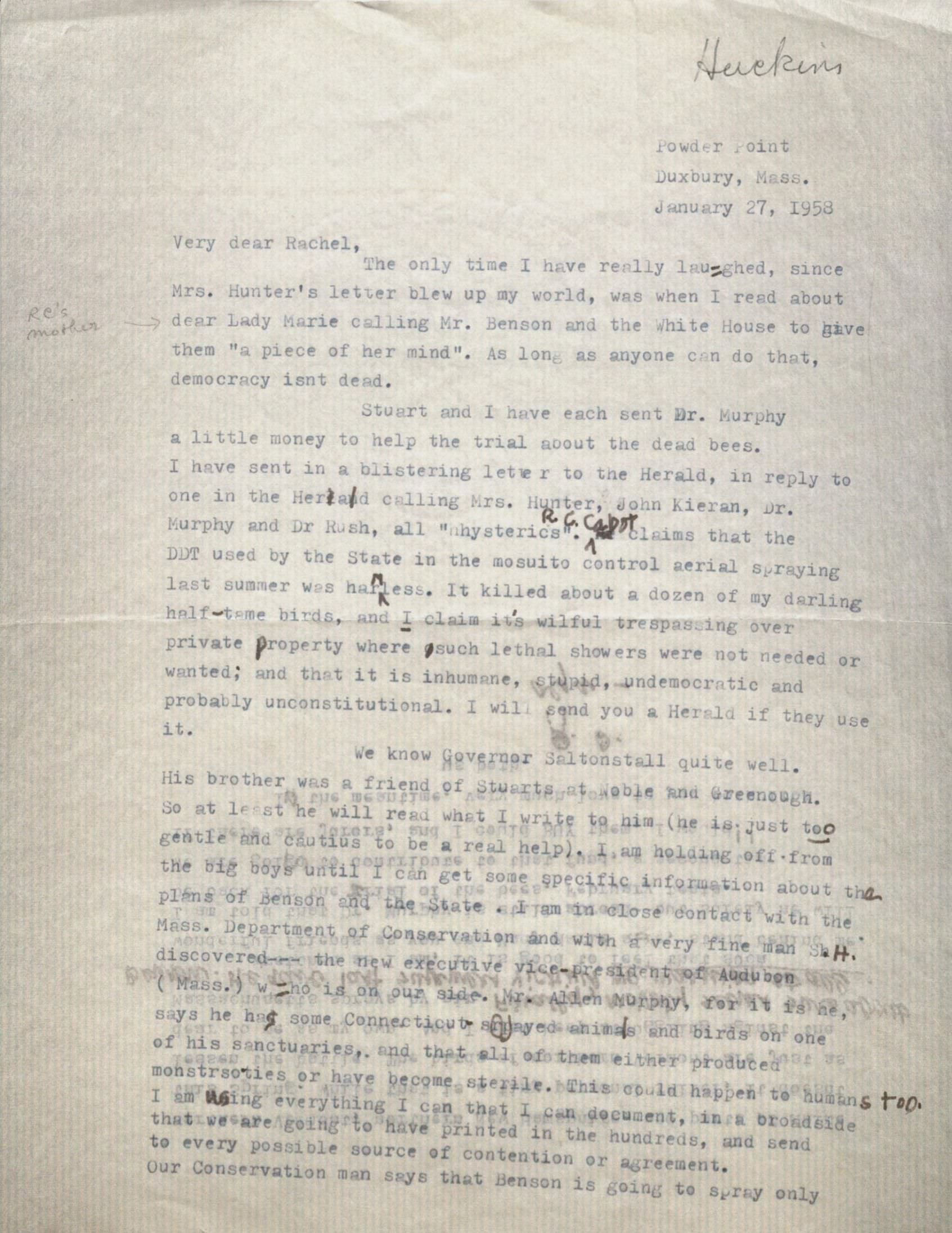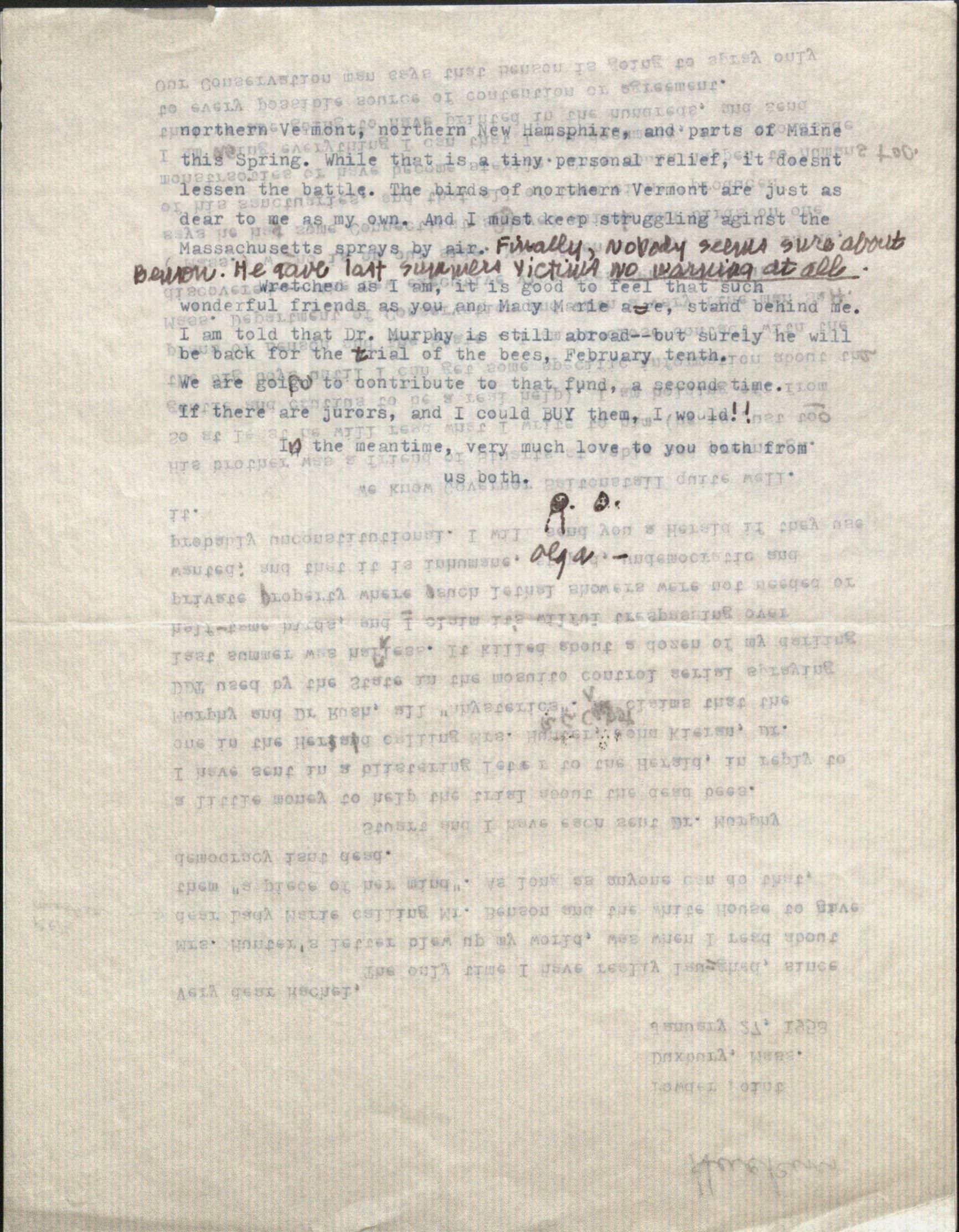September 27 marks the 50th anniversary of Rachel Carson’s Silent Spring, published by Houghton Mifflin in 1962, a provocative work that explores the consequences of the overuse of pesticides on the natural environment. The book’s publication incited the ire of the chemical industry and triggered a federal investigation into the misuse of pesticides, which resulted in Congressional hearings in 1963 and the tightening of chemical pesticide regulations.
Silent Spring was originally serialized in the The New Yorker in June of that same year.
Rachel Carson received the Audubon Medal, from the National Audubon Society, for Silent Spring, among other recognitions. She died of cancer on April 14, 1964. A national wildlife refuge on the coast of Maine is named for Carson (http://www.fws.gov/northeast/rachelcarson/).
A guide to the items in the Rachel Carson papers, YCAL MSS 46, which include the 1958 letter from Olga Huckins, who writes that aerial DDT spraying “killed about a dozen of my darling half-tame birds” and is said to have been the impetus for Silent Spring, can be found here: http://drs.library.yale.edu:8083/fedora/get/beinecke:carson/PDF
Items from the collection that have been digitized are available here: http://beinecke.library.yale.edu/digitallibrary/carson.html
Images: Cover of first edition of Silent Spring; covers of New Yorker magazines, June 1962; letter from Olga Huckins to Rachel Carson, Jan. 27, 1958. From the Yale Collection of American Literature, Rachel Carson Papers, YCAL MSS 46, Box 43, Folder 814.
